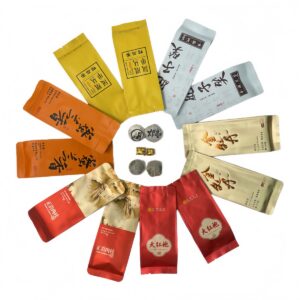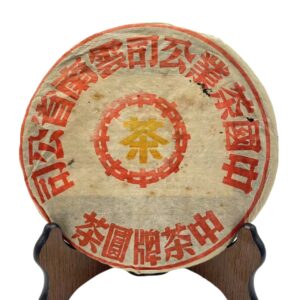Dark tea greets you like a whispered secret from ancient hills—each cup a delicate tapestry of earthy aroma, rich undertones, and whispered tannins. From the first steeped swirl of deep amber liquid, you sense a world steeped in traditions that span centuries. As steam curls upward, carrying subtle hints of moss, caramel, and forest floor, you realize that dark tea is not merely a beverage; it is a profound sensory journey.
Whether you have tasted its mellow embrace or are about to embark on your first encounter, this guide unlocks the mysteries of dark tea. We’ll delve into its storied past, explore celebrated varieties like Liubao tea, aged dark tea, and its acclaimed reputation as dark tea for gut health. By the end, you’ll know precisely how to select, brew, and savor dark tea to enrich your daily rituals, soothe your spirit, and nurture your well-being.
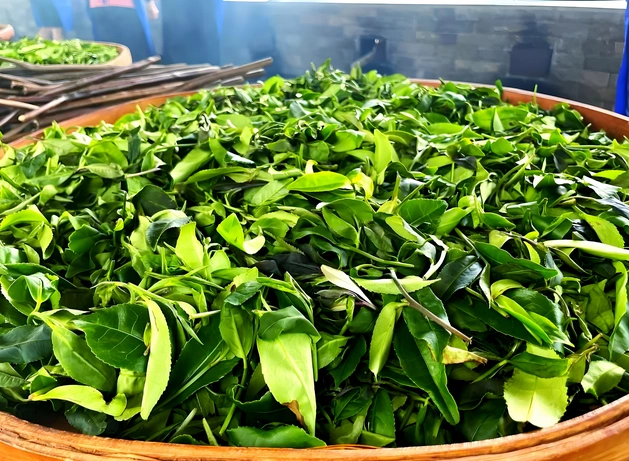
Understanding Dark Tea: Definition and Characteristics
At its core, dark tea is a post‐fermented tea category that stands apart from green, oolong, or black teas. Unlike green tea—which is minimally oxidized and preserves fresh vegetative notes—or black tea, which undergoes full oxidation, dark tea is transformed through microbial fermentation. This extended aging process, often lasting months or even years, allows friendly bacteria and molds to develop a complex flavor profile that can only be described as “terroir in a cup.”
Key Characteristics of Dark Tea
- Post‐Fermentation: After the initial withering and rolling steps, leaves are piled, moistened, and left to ferment under controlled humidity. This microbial action deepens flavor, creating sweet, earthy, and sometimes woody notes.
- Aged Complexity: Many dark teas, such as aged dark tea and Liubao tea, improve with time. Each year adds layers of depth—smoother textures, richer aromas, and a mellow sweetness that can only develop through patient aging.
- Flavor Profile: Dark teas often present a rich tapestry of flavors: subtle cocoa, ripe stone fruit, damp forest floor, and occasional smoky accents. The texture is velvety, leaving a lingering richness that invites another sip.
- Healthful Attributes: Renowned for its probiotic qualities, dark tea for gut health has been prized in Chinese medicine for centuries. Its gentle microbial fermentation produces compounds that support digestive balance and overall vitality.
Historical Roots and Cultural Significance
Tracing back over a millennium, dark tea emerged in remote regions of China as a preservation method. Farmers in Hunan, Yunnan, Guangxi, and Fujian discovered that piling and fermenting tea leaves allowed them to endure long transport along ancient trade routes. Over time, these teas became central to commerce, culture, and medicinal practices.
Origins in Ancient Trade
- Tea–Horse Road: Merchants exchanged dark tea for horses and salt, carrying pressed tea cakes across rugged mountain passes. In these harsh conditions, dark tea’s durability and evolving flavor were treasured by traders and soldiers alike.
- Cultural Rituals: In provinces like Hunan and Guangxi, dark tea ceremonies developed to honor guests. A steaming pot of dark tea, served in small porcelain cups, symbolized respect and hospitality, weaving tea into the social fabric.
Medicinal and Social Importance
- Traditional Chinese Medicine: Healers valued dark tea’s warming, digestive properties. It was prescribed for indigestion, fatigue, and as a general health tonic. Even today, wellness seekers turn to dark tea for gut health to soothe their digestive systems.
- Regional Identity: Distinct varieties like Liubao tea from Guangxi and Yunnan’s Pu-erh forged regional pride. Entire villages specialized in crafting these teas, passing down secret fermentation techniques through generations.
Varieties of Dark Tea
Within the vast category of dark tea, several star varieties stand out, each boasting unique terroir, processing, and history. Here, we explore three flagship styles and touch on noteworthy regional cousins.
1. Pu-erh Tea
- Raw (Sheng) Pu-erh: Harvested from ancient tea trees in Yunnan, leaves are sun-withered and lightly pressed. Over months or years, the cake naturally ages, developing a layered complexity—floral top notes, earthy midtones, and a lingering sweet finish.
- Ripe (Shou) Pu-erh: In the 1970s, tea masters pioneered a “wet-piling” process to simulate aging. Shou Pu-erh undergoes accelerated fermentation, producing a rich, chocolatey brew with notes of leather and dark fruit.
Pu-erh is often the gateway to aged dark tea, prized for its evolving character and deep, grounding flavor.
2. Liubao Tea
Hailing from Guangxi province, Liubao tea (六堡茶) features sun-dried leaves that undergo multiple days of pile fermentation. Factors that distinguish Liubao include:
- Region: Liubao Township’s humid climate fosters robust microbial activity.
- Flavor: A deep reddish infusion offers notes of caramel, wood, and toasted nuts, balanced by a mild sweetness.
- Aging Potential: Properly stored, Liubao can age gracefully for decades, smoothing its tannins and intensifying its umami richness.
3. Other Regional Varieties
- Anhua Dark Tea (Hunan): Pressed into bamboo-wrapped bricks, Anhua tea ages under humid conditions. The finished brew is dark mahogany with cinnamon-spice and earth-drenched nuances.
- Sichuan “Bolo” Tea: Produced near Ya’an, these curly, dark leaves yield a sweet, honey-laced infusion. Its aromatic profile can include chestnut and sweet wood.
Each of these dark teas highlights the profound influence of microclimate, processing, and time.
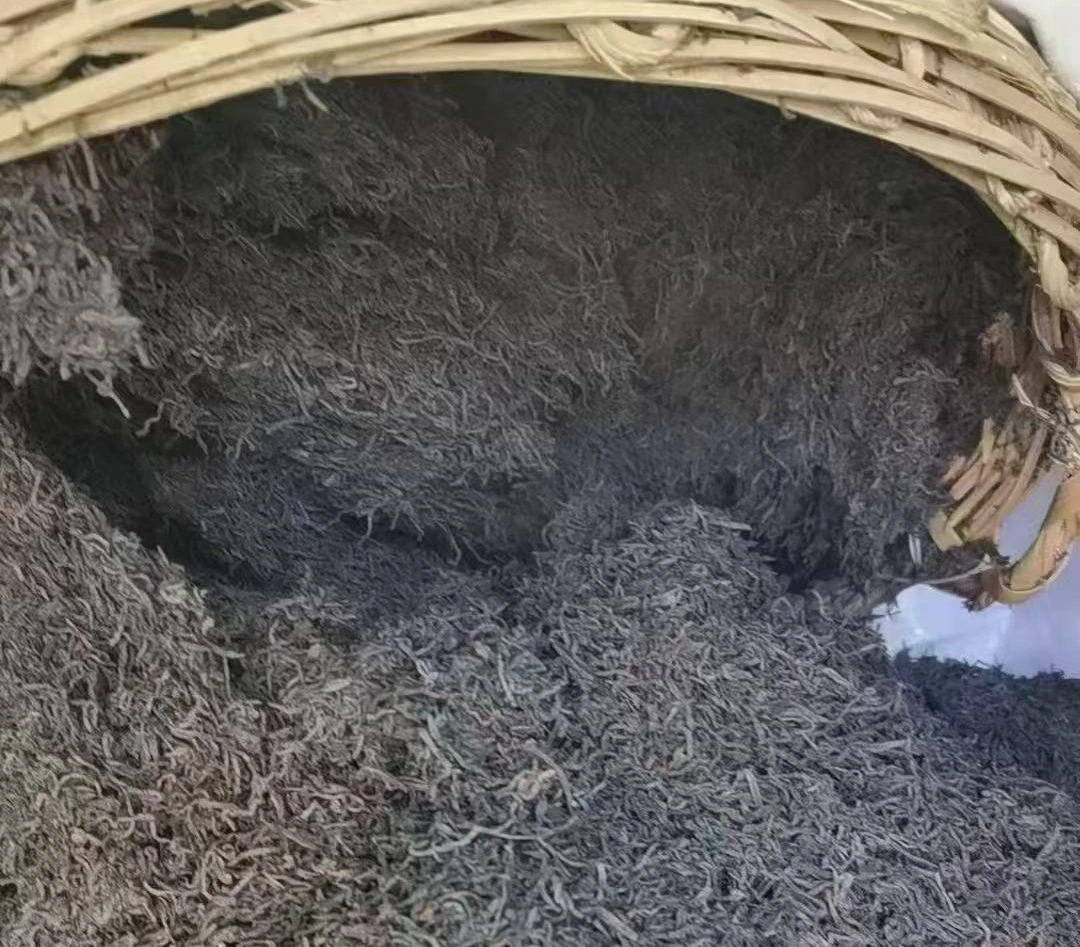
Health Benefits of Dark Tea
The rich tapestry of dark tea extends well beyond its flavor, weaving into lasting wellness benefits that modern science increasingly affirms.
Antioxidant Power & Cellular Protection
- Polyphenols in dark tea—particularly catechins, theaflavins, and thearubigins—combat oxidative stress. These antioxidants help neutralize free radicals, protecting cells from damage and supporting skin health.
- Studies suggest that regularly sipping dark tea may contribute to healthy aging by preserving cellular integrity.
Digestion & Gut Health
- Paired with “dark tea for gut health”: Thanks to microbial fermentation, dark tea is rich in probiotics and enzymes that soothe digestion, reduce bloating, and promote a balanced gut microbiome.
- Tannins in dark tea can help moderate digestive discomfort, making it an ideal after-meal ritual.
Metabolism & Weight Management
- The combination of caffeine and bioactive compounds—like theophylline—can gently elevate metabolic rate. While not a miracle weight-loss solution, regular consumption of dark tea may support calorie burning and healthy lipid metabolism.
Heart Health & Blood Sugar Regulation
- Research indicates that dark tea’s unique fermentation byproducts help maintain healthy cholesterol levels and support balanced blood sugar responses—especially beneficial for those monitoring cardiovascular and metabolic health.
Brewing Techniques for Optimal Flavor
To unlock the full sensory depth of dark tea, mastering brewing is essential. Whether you prefer a simple Western-style cup or the ritualized Gongfu approach, here’s how to ensure each infusion shines.
Western-Style Brewing
- Water Temperature: 95–100 °C (203–212 °F) to fully extract the robust flavors.
- Leaf Ratio: 3 g (≈1 tsp) of loose-leaf dark tea per 250 ml of water.
- Steep Time: 3–4 minutes for a medium-strength brew; extend to 5 minutes for a bolder cup.
Pour water directly over leaves in a teapot or infuser, cover, and steep. Adjust steep time to taste: shorter for smoother, or longer for deeper, more pronounced earthy notes.
Gongfu-Style Brewing
For a layered tasting adventure, the Gongfu method shines:
- Leaf Ratio: 6–8 g per 100 ml water (≈1 heaping tbsp).
- Rinse Leaves: Quick 5-second rinse to awaken the leaves and remove surface dust.
- Infusions: Start with a 10 second infusion, then increment by 5 seconds each subsequent brew. Experience a gradual unfolding: initial vegetal or sweet top notes, evolving into bold earthy midtones, concluding with a gentle aftertaste.
Use a small Yixing clay teapot or a porcelain gaiwan to accentuate nuanced aromas. Savor each infusion slowly, noting how age or variety influences the flavor journey.
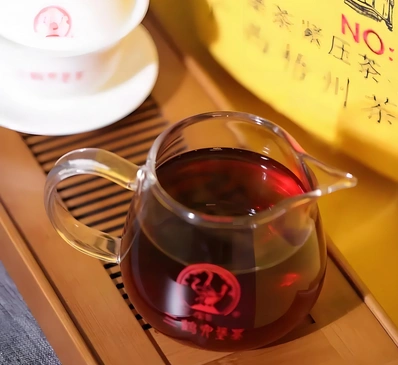
🔗 For more tea brewing methods, check out the YouTube video explaining the brewing methods.
Incorporating Dark Tea into Modern Lifestyles
Today’s fast-paced world demands both focus and calm—qualities that dark tea elegantly provides.
Morning Energy Ritual
Replace a standard latte with a steaming cup of robust aged dark tea. Its balanced caffeine lifts you gently from slumber, while antioxidants prime your body for the day ahead. Pair with a light oatmeal bowl or fruit to kickstart metabolism.
Afternoon Pick-Me-Up & Focus
Office workers find solace in dark tea for office workers. When post-lunch drowsiness strikes, a mid-afternoon infusion of Liubao tea or ripe Pu-erh sharpens concentration without jitters. Keep a small infuser on your desk to brew in minutes—inhale the deep, grounding aroma as you return to your tasks.
Study Rituals
Students and lifelong learners benefit from dark tea for study focus. The combination of gentle caffeine and calming L-theanine fosters a state of relaxed alertness. Brew a small pot of high-aged Pu-erh, sip mindfully between chapters, and let the earthy warmth channel your concentration.
Evening Wind-Down
Although containing some caffeine, many dark teas—especially those aged—are mild enough for evening enjoyment. A late-night cup of lightly aged Shou Mei tea soothes tense muscles and eases digestion, offering a gentle transition to restful slumber.
Selecting and Storing Quality Dark Tea
Finding exceptional dark tea demands attention to detail. Here’s how to ensure every purchase garners maximum enjoyment:
Identifying High-Quality Dark Tea
- Leaf Appearance: Look for whole, intact leaves or cake bricks with visible buds. Avoid excessive dust or broken fragments.
- Aroma: Fresh dark tea should smell earthy, slightly sweet, and free of mustiness. Aging should add complexity—not any dank or moldy notes.
- Origin & Age: Verify region (e.g., Yunnan for Pu-erh, Guangxi for Liubao) and harvest year. Older, well-stored aged dark tea often commands higher price for its mellow depth.
Proper Storage
- Airtight Containers: Use ceramic or opaque metal tins with tight-fitting lids.
- Climate Control: Store in a cool, dry area (15–25 °C) away from direct sunlight and strong odors.
- Aging Space: For raw Pu-erh or Liubao, allow a little airflow to deepen fermentation gradually. For ripe (shou) teas, maintain slightly lower humidity to prevent over-fermentation.
When stored correctly, dark tea can age gracefully for decades, revealing ever-evolving layers that reward patient connoisseurs.
Conclusion: Embracing the Richness of Dark Tea
Dark tea is far more than a beverage—it is an invitation to journey through time, culture, and sensory discovery. From the ancient mountain terraces where Liubao tea emerged to the artful cellars that nurture aged dark tea, every sip offers a moment of connection: to history, to nature, and to your own well-being. By understanding its fermentation, recognizing its varieties, and mastering brewing techniques, you can weave dark tea into the fabric of your daily life—awakening each morning with clarity, sustaining focus in the afternoon, and winding down in the evening with gentle satisfaction.
Whether you are new to dark tea or a seasoned enthusiast, may this guide empower you to explore its myriad expressions. Let every cup—from bright young Pu-erh to mellow, time-worn bricks—remind you that the richest pleasures often unfold slowly, steeped in patience, tradition, and deep sensory delight. Cheers to your next adventure in dark tea.

